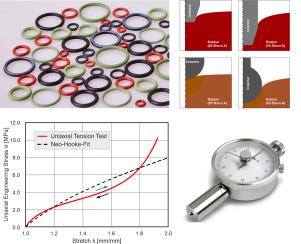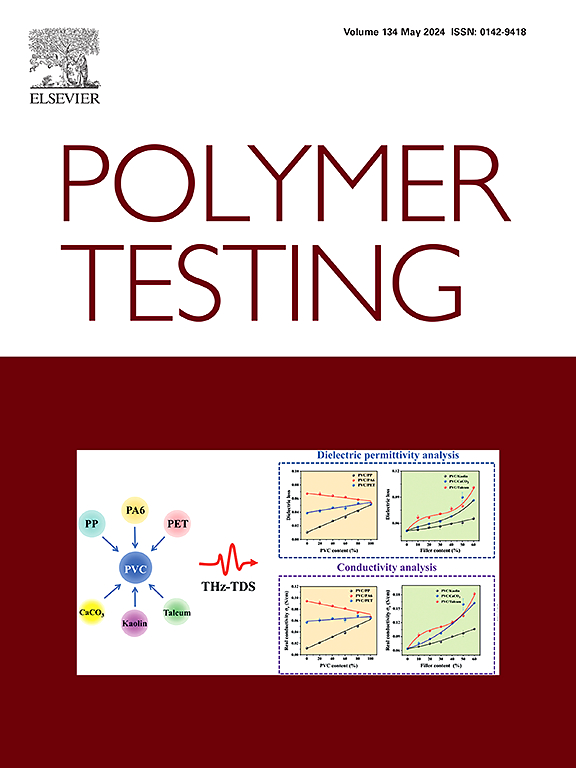Material models for rubber based on indentation hardness: Comparison between theory and simulation
IF 6
2区 材料科学
Q1 MATERIALS SCIENCE, CHARACTERIZATION & TESTING
引用次数: 0
Abstract
The reliability of finite element simulations for rubber components largely depends on the accuracy of the material models used to represent the mechanical behavior of elastomers. A common challenge faced by simulation engineers is the frequent lack of detailed material models for the specific rubber compounds in use. This study addresses that gap by presenting practical, hardness-based approximation techniques for estimating material parameters. To this end, a range of established methods and equations for deriving parameters from hardness data is reviewed. Given the wide variety of rubber material models, the scope is limited to the Neo-Hookean model. Accordingly, several approaches have been developed to estimate Neo-Hookean parameters directly from hardness measurements. By examining the underlying principles, particularly those related to rubber hardness testing, this work aims to improve the understanding of these techniques and clarify their applicability and limitations. The accuracy of the proposed approximations is evaluated across various rubber materials by comparing the predicted stress–strain behavior with results from finite element simulations of indentation tests.

基于压痕硬度的橡胶材料模型:理论与仿真的比较
橡胶部件有限元模拟的可靠性在很大程度上取决于用于表示弹性体力学行为的材料模型的准确性。仿真工程师面临的一个共同挑战是经常缺乏具体使用的橡胶化合物的详细材料模型。本研究通过提出实用的、基于硬度的近似技术来估计材料参数,从而解决了这一差距。为此,本文回顾了从硬度数据中导出参数的一系列已建立的方法和方程。鉴于橡胶材料模型的种类繁多,其范围仅限于新胡克模型。因此,已经开发了几种方法来直接从硬度测量中估计新胡克参数。通过检查基本原理,特别是与橡胶硬度测试有关的原理,本工作旨在提高对这些技术的理解,并阐明其适用性和局限性。通过将预测的应力-应变行为与压痕试验的有限元模拟结果进行比较,对各种橡胶材料的拟合精度进行了评估。
本文章由计算机程序翻译,如有差异,请以英文原文为准。
求助全文
约1分钟内获得全文
求助全文
来源期刊

Polymer Testing
工程技术-材料科学:表征与测试
CiteScore
10.70
自引率
5.90%
发文量
328
审稿时长
44 days
期刊介绍:
Polymer Testing focuses on the testing, analysis and characterization of polymer materials, including both synthetic and natural or biobased polymers. Novel testing methods and the testing of novel polymeric materials in bulk, solution and dispersion is covered. In addition, we welcome the submission of the testing of polymeric materials for a wide range of applications and industrial products as well as nanoscale characterization.
The scope includes but is not limited to the following main topics:
Novel testing methods and Chemical analysis
• mechanical, thermal, electrical, chemical, imaging, spectroscopy, scattering and rheology
Physical properties and behaviour of novel polymer systems
• nanoscale properties, morphology, transport properties
Degradation and recycling of polymeric materials when combined with novel testing or characterization methods
• degradation, biodegradation, ageing and fire retardancy
Modelling and Simulation work will be only considered when it is linked to new or previously published experimental results.
 求助内容:
求助内容: 应助结果提醒方式:
应助结果提醒方式:


